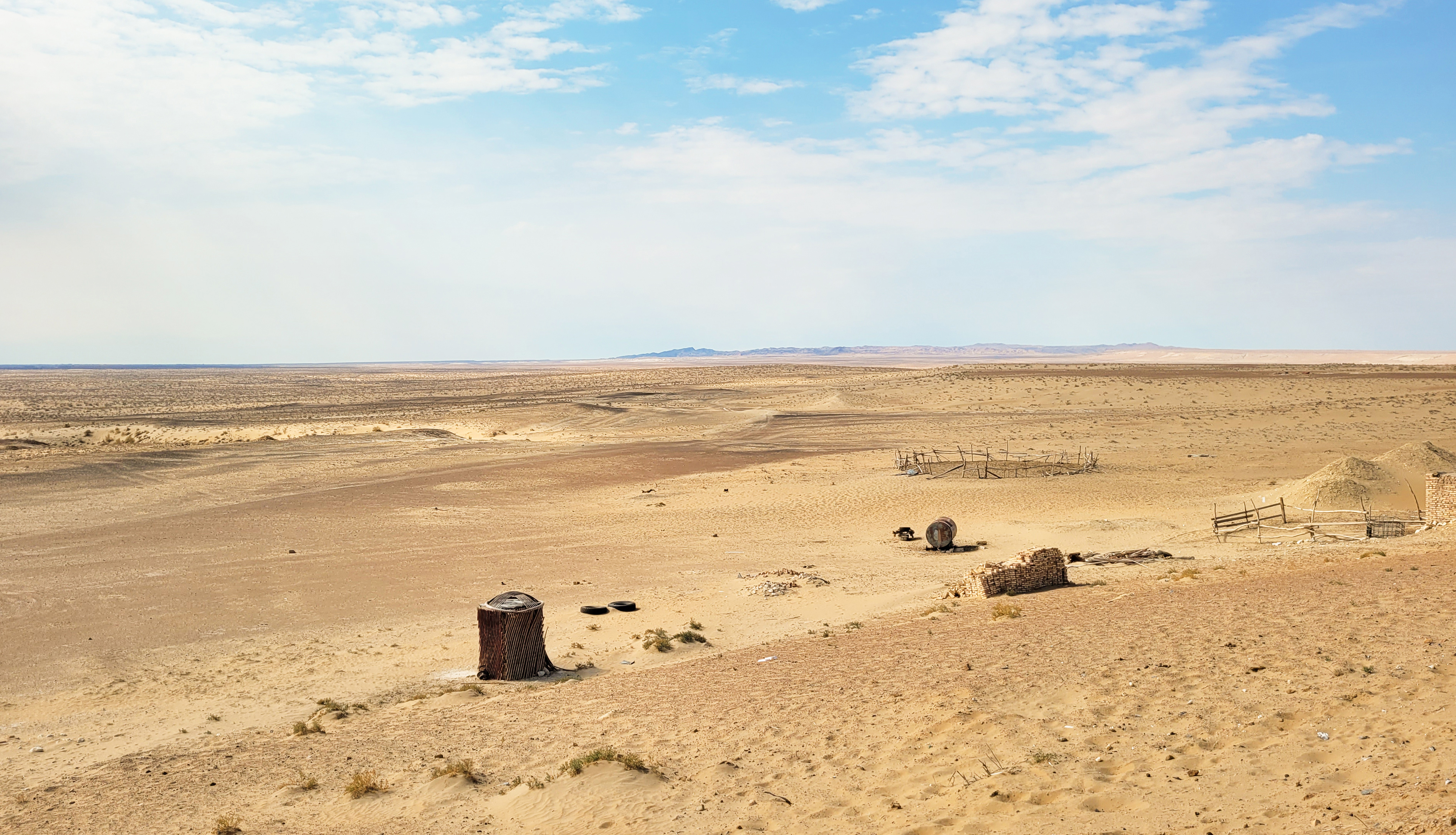Facts for Kids
The Kyzylkum Desert is a vast, arid desert in Central Asia, characterized by its striking red sand dunes and unique wildlife.
Overview
Flora And Fauna
Human Habitation
Climate And Weather
Economic Activities
Conservation Efforts
Cultural Significance
Geography And Location
Exploration And Research

Inside this Article
Sustainable Farming
Bactrian Camel
Climate Change
Desert Climate
Uzbekistan
Geography
Livestock
Silk Road
Culture
Did you know?
🏜️ The Kyzylkum Desert spans over 298,000 square kilometers, making it one of the largest deserts in Central Asia.
🌡️ Temperatures in the Kyzylkum can soar up to 50°C (122°F) in summer, creating extreme conditions.
🌵 The desert is primarily composed of sandy soil, with large areas of gravel and clay.
🌌 Kyzylkum means 'Red Sand' in Turkic languages, named for its reddish dunes.
🐪 It is home to various wildlife, including species like the Arabian Oryx and the Bactrian camel.
🌧️ The annual rainfall in Kyzylkum averages between 100 to 200 mm, making it a hyper-arid environment.
🦎 Various reptiles, such as lizards and snakes, thrive in the harsh ecosystem of the desert.
🏔️ The Kyzylkum Desert is bordered by the Amu Darya river to the south and the Ustyurt Plateau to the west.
🚗 The region is often explored via off-road vehicles due to its challenging terrain.
🏞️ Despite its harsh conditions, the desert features unique landscapes, including cliffs, canyons, and salt flats.
Introduction
️ Spanning around 298,000 square kilometers, it is one of the largest deserts in the world. The Kyzylkum Desert is home to interesting plants and animals that can survive in harsh conditions. Many people love to explore this amazing desert, making it a great spot for adventure and learning!
Flora And Fauna
Some common plants are the saxaul tree and various types of small bushes. These plants can store water, helping them survive in the dry environment. The desert is also home to amazing animals like the endangered Bactrian camel, desert foxes, and various species of lizards and snakes. 🐍
These clever creatures have special adaptations that help them find food and stay cool in the hot sun!
Human Habitation
️ Some of these tribes raise livestock, like sheep and goats. Villages can be found near rivers, where people grow crops like cotton and fruits. Major cities nearby, like Samarkand, have deep historical roots, with beautiful architecture and culture. People visiting the desert can learn about the traditions of these communities and see how they live in such a challenging environment!
Climate And Weather
Economic Activities
People in this area engage in agriculture, growing crops like cotton and melons near rivers. Additionally, the desert is rich in minerals, particularly uranium and gold, which are mined for economic purposes. This resource extraction provides jobs and helps develop local communities. Tourism is also growing as more visitors come to explore this fascinating desert environment and learn about its unique culture!
Conservation Efforts
Organizations are working with local communities to create protected areas for wildlife and important habitats. They also promote sustainable farming and responsible tourism to minimize human impact on the environment. Education programs help people understand the desert's value and encourage them to care for its resources and biodiversity. By working together, communities can keep this beautiful desert safe for future generations to enjoy!
Cultural Significance
It was once part of the ancient Silk Road, a famous trade route connecting the East to the West. This route helped spread ideas, goods, and cultures among different peoples. Today, local traditions, music, and dance reflect the history of the region. Festivals celebrating the area's rich culture are held, allowing visitors to experience the unique lifestyle that has been preserved over many generations. The beauty and mystery of the desert inspire artists, writers, and explorers worldwide!
Geography And Location
The desert is surrounded by mountains and is close to several important cities like Samarkand and Bukhara in Uzbekistan. Its unique landscape includes sandy hills, rocky areas, and even some flat plains. The Kyzylkum Desert is located north of the famous Kyzyl Kum steppes, making it a special part of Central Asia's geography. It is a fun big adventure playground for nature lovers and those who like to discover new places!
Exploration And Research
️♀️ Scientists study its unique plants, animals, and geology to learn more about how life thrives in deserts. Field trips and expeditions allow scientists and adventurers to gather valuable information about the region. Many researchers also investigate the effects of climate change on the desert's environment. These studies help us understand how to protect this incredible place while inspiring young explorers to discover more about our amazing world! 🌎

